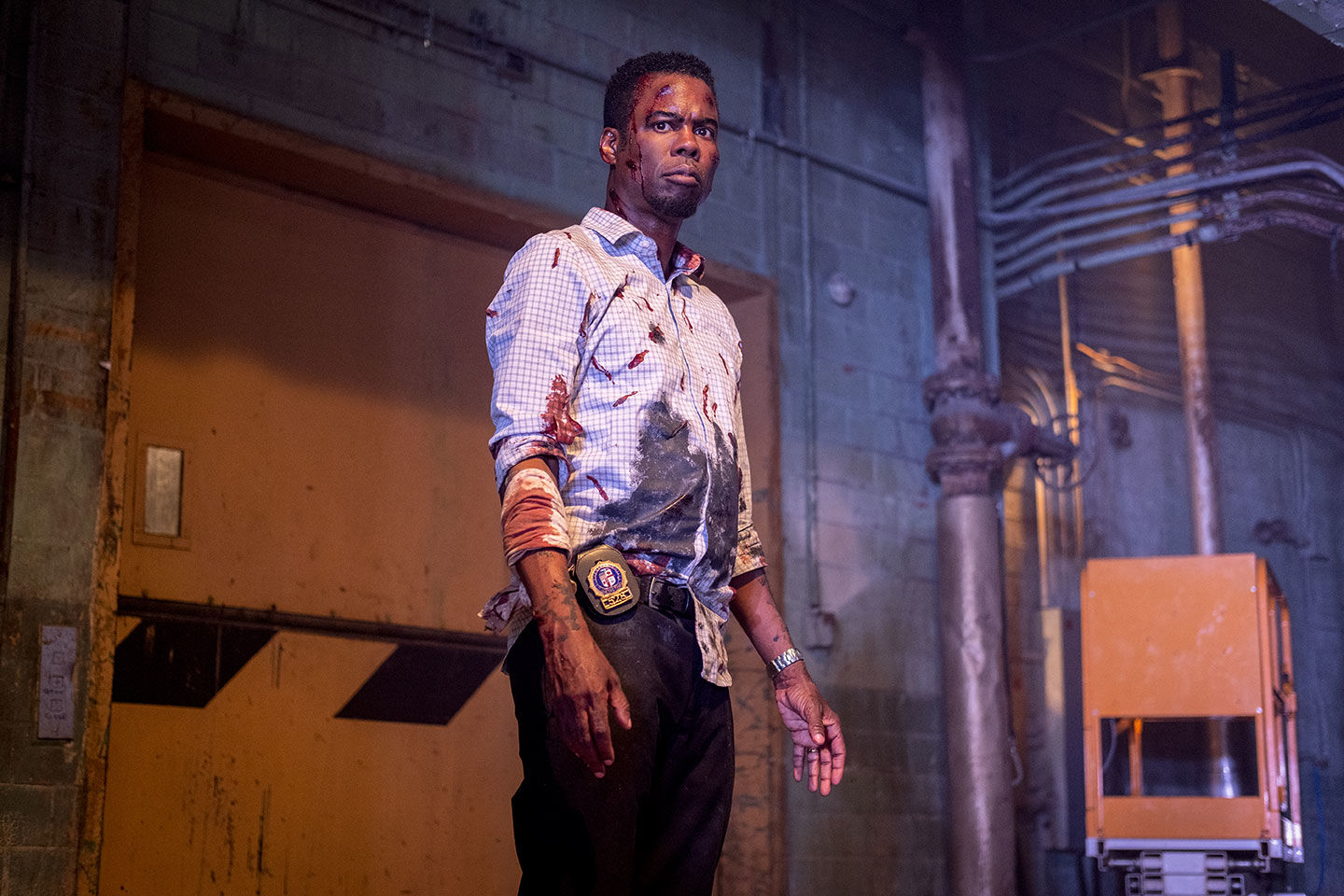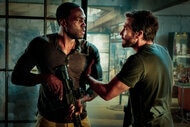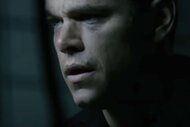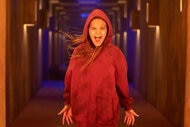Create a free profile to get unlimited access to exclusive videos, sweepstakes, and more!
Spiral director Darren Lynn Bousman on Easter eggs, Saw traps, and that twist ending

Over the weekend, horror fans everywhere were treated to the first new installment of the Saw franchise in four years. Spiral: From the Book of Saw presented a particularly intriguing continuation of the brutal horror series, in part because of the blend of old and new that it brought to the Saw party. Though the film boasts horror newcomer Chris Rock in a leading role in both the film itself and in crafting the story, it also featured work from Jigsaw screenwriters Josh Stolberg and Peter Goldfinger, and direction from Darren Lynn Bousman, who directed the first three Saw sequels and then departed the franchise seemingly for good more than a decade ago.
Last week, SYFY WIRE spoke with Bousman about what it was like to return to the iconic, death trap-laden series, working with Rock to craft the tone, and more. Now, in part two of that conversation, we're digging into more spoilers from the film, including the twist ending, shooting a whole new breed of Saw traps, and Easter eggs, and possible sequels.
Warning: Spoilers ahead for Spiral: From the Book of Saw.
What did the ending look like when you came on board? Was it always William (Max Minghella) behind the murders, and how did you help shape it?
It was always William. And it's funny reading the reviews now, because that, to me, wasn't the twist. I thought people would have realized that 10 minutes in. To me, the twist more than anything was the final moments. You have this image constantly of this [pig] marionette puppet. And, literally the first time you see the marionette puppet, it rises up and puts its hands up and it goes [gunshot sounds]. If you go back and listen to the lines, you have William saying, "Cops shoot first, ask questions later," and the very last scene, he basically hands [Zeke] a gun and is like, "Do what you want to do. Go ahead and shoot me if you want, but [Marcus is] going to die."
Everything that William says is exactly what happens. You know, Marcus becomes the marionette. He becomes the thing that was given to them. All of the warnings that this will happen, ends up happening. Those are the things that I really dig. I think that the Saw audience is so smart now, they're so in tune to tricks that. On Reddit, for example, they had put together every single piece of footage that had been released in order in a timeline. So you could watch what they thought the order of the movie was. They're zooming in on reflections on glasses, they're looking at the most obscure things, so it's really hard to trick an audience like that, because you now have the internet. You now have Reddit, you now have these message boards where fans can theorize and share things, you have Twitter. You know, it is a different world than it was 20 years ago.
So, how can we do a misdirect? Even if they get who the killer is, they're not going to get how the movie's going to end. I added the marionette puppet. I added the pig guy in there. [Originally] Marcus was in a different trap. He was in like a swimming pool, and I wanted [his death] to end like the movie began, which was the first video of the puppet. It's a constant thing that evolves throughout shooting. You keep finding new connective tissues and add those in there. You add the lines in there that will help sell the twist later. It's like trying to pull off a magic trick, it really is.
Of all the new traps in the film, which was toughest to pull off?
Every one is complicated in its own right. The train trap in the beginning was my favorite from a directing standpoint, because it doesn't exist. It's all a forced perspective. When you're actually standing in the tunnel, the tunnel is no bigger than, like, 10 feet. When you're standing there, it looks like the tunnel goes on and on and on, but it's not, it's small. I love that just because I love in-camera trickery, which that completely is. The wax trap was probably one of the more difficult ones to shoot, because you really are waterboarding an actor. They're locked in, they're completely unable to move, and they have things hitting them in the face and falling on them. So I think that was the hardest one for us to shoot.
The Samuel Jackson trap, though, was the most complicated, because you have Samuel L. Jackson hanging in a very uncomfortable position, having to act, having prosthetic limbs, having squibs, having, you know, all of this. So I think that was the most difficult one to shoot. The glass trap had its own problems because you really are shooting that out. That is actual candy glass and rubber being shot out. And that hurts because they were literally being fired at Chris and at [Patrick McManus, who played Pete Dunleavy]. So, they're all complicated in their own right.
There's obviously a setup for a sequel here. Would you consider coming back again?
I mean, I guess I've learned never say never. I said I would never come back after Saw IV and here we are talking two decades later. I had a great time this time around. It's kind of reinvigorated my love of the franchise. So, you know, if they asked me the answer is yes, I would.
There are a lot of Easter eggs in the film. Is there something we should be looking for that we perhaps didn't see, and do you have a favorite?
I do personally, but it won't mean much to you. We had an artist on set who was a spray paint artist. He would tag things. I recommend going back and looking at all the spray paint, because I put a ton of stuff in there. I mean, this won't mean anything to you, but like I have a tattoo here, which is a tattoo from an immersive project that I did, that you'll find prominently featured throughout the movie. I have messages I've written on walls, all in spray paint. There are other tie-ins to other movies done in the background of shots, the background of scenes, whether they're papers laying on desks or on bulletin boards behind the actors. So there were a lot of tie-ins that we put in, also names of things, names on license plates. There's lots of [Easter eggs], but you have to look for them. They're not in your face. They're very, very subtle because I didn't even tell the producers at the time I was doing it. I just did it. So when you rewatch the movie, look at the spray paint, look at the papers on the desk. You'll see a lot of stuff like that.
Considering all the time you've spent away from the franchise, what did you learn in your time away that you brought back for this film in particular?
For me, I've just evolved as a filmmaker. You know, it used to be quick cuts every one second. It used to be, you know, shaky handheld cameras, and the blood and gore were the focus of the scenes. Now, gone are the shaky, handheld, one-edit transitions. You know, there were numerous one-take shots in the movie, [like] the subway scene, which is a four-minute take with no cutting. And I've let dialogue kind of take over like, you know, the scene of Chris and Max in the car just talking. It's just character building, which I never did before. I would just get to the violence. You know, this movie will alienate some people. You already see that in the reactions, where people either love it or they hate it, because it is not like any of the other Saw films. It is its own unique thing. And I think that part of that is me growing up, you know. I'm a father now, I have two kids, I'm married. I'm not the 24-year-old person I was when I made Saw II. It's a different movie. And I think to me, that's exciting, because I wanted to do something that paid homage to the original films, but was its own unique thing. And I think that's what this movie is.
This interview has been edited and condensed for length and clarity.


























